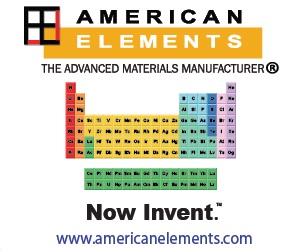
April 22 - 26, 2024
Seattle, Washington
May 7 - 9, 2024 (Virtual)
Symposium Supporters
2024 MRS Spring Meeting & Exhibit
EL05.08.23
Acknowledgements: The research is supported by National Science Foundation under Grant No. ECCS-2100748.
Fabrication of Nanostructured Molybdenum Disulfide (MoS2) Thin Film–Based Electronic Devices
When and Where
Apr 24, 2024
5:00pm - 7:00pm
5:00pm - 7:00pm
Flex Hall C, Level 2, Summit
Presenter(s)
Co-Author(s)
Zhigang Xiao1,Kevin Qian1,Ibraheem Giwa1,Fabian Sanchez1,Elton Mawire1,Sherwood Dong1,Eric Smith1,Qunying Yuan1
Alabama A&M University1
Abstract
Zhigang Xiao1,Kevin Qian1,Ibraheem Giwa1,Fabian Sanchez1,Elton Mawire1,Sherwood Dong1,Eric Smith1,Qunying Yuan1
Alabama A&M University1
In this study, we report the fabrication of molybdenum disulfide (MoS2) thin films–based electronic devices. Nanostructured molybdenum disulfide (MoS2) thin films are grown as the active semiconducting channel material for the fabrication of MoS2-based field-effect transistors using plasma-enhanced atomic layer deposition (ALD). MoS2–based electronic devices such as MoS2 field-effect transistors, inverters, and ring-oscillators are fabricated with the ALD-grown MoS2 film using the clean room-based micro- and nano-fabrication techniques. Hydrogen sulfide (H2S) gas is used as the S source in the growth of molybdenum disulfide (MoS2) while molybdenum (V) chloride (MoCl5) powder is used as the Mo source. The MoS2 film will be analyzed by the high-resolution tunnel electron micrograph (HRTEM), scanning electron micrograph (SEM), X-ray photoelectron spectroscopy (XPS) analysis and Raman spectrum analysis. The fabricated MoS2 device wafer will be annealed at high-temperatures (800 – 900 oC), and the electrical property of the MoS2–based electronic devices will be measured before and after the high-temperature annealing and will be compared. The characterization results of the nanostructured molybdenum disulfide (MoS2) thin films and the measurement results on the fabricated MoS2–based electronic devices will be reported in the 2024 MRS Spring Meeting.Acknowledgements: The research is supported by National Science Foundation under Grant No. ECCS-2100748.
Keywords
2D materials | plasma-enhanced CVD (PECVD) (chemical reaction) | thin film
Symposium Organizers
Silvija Gradecak, National University of Singapore
Lain-Jong Li, The University of Hong Kong
Iuliana Radu, TSMC Taiwan
John Sudijono, Applied Materials, Inc.
Symposium Support
Gold
Applied Materials
Applied Materials
Session Chairs
Silvija Gradecak
Iuliana Radu



















